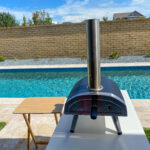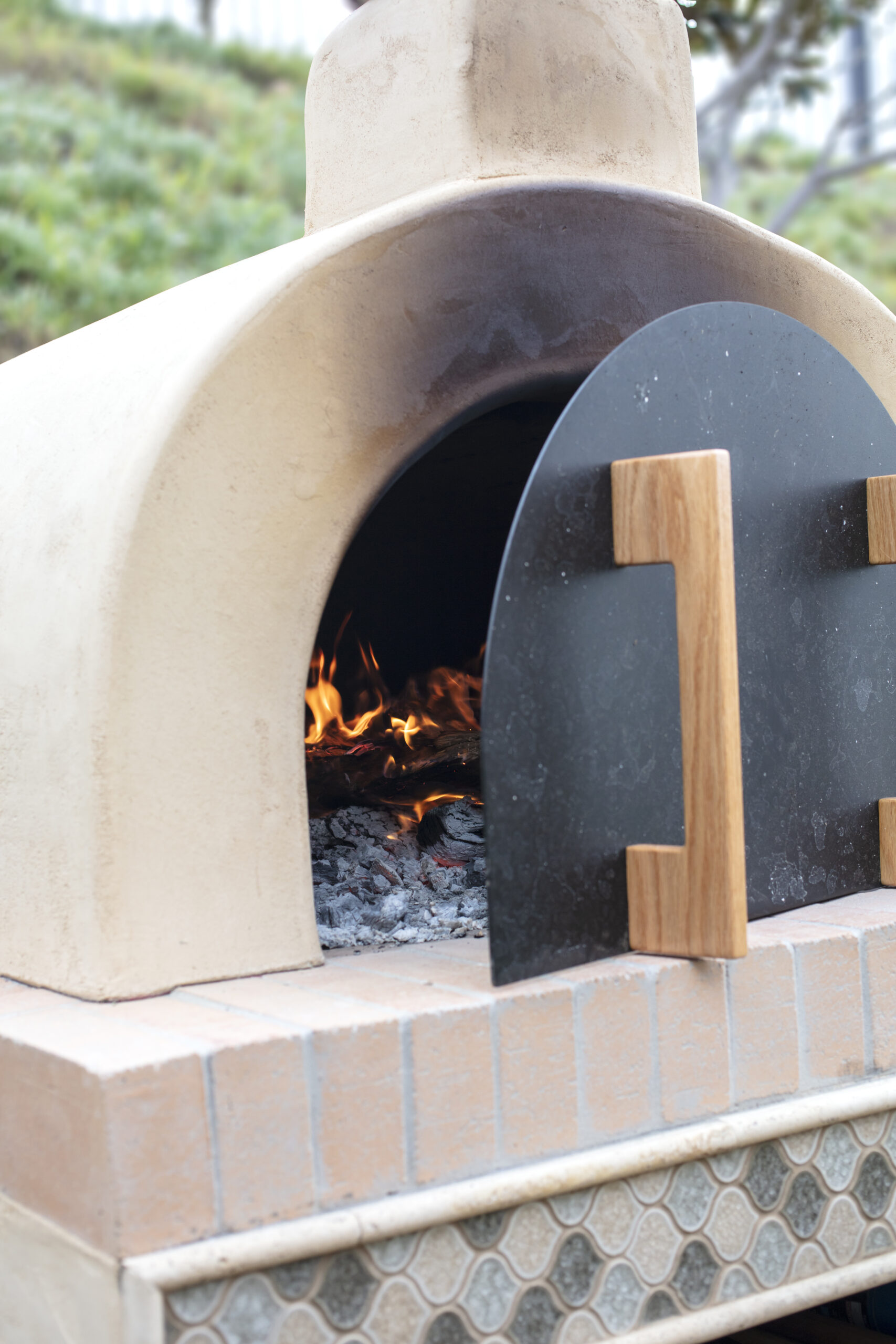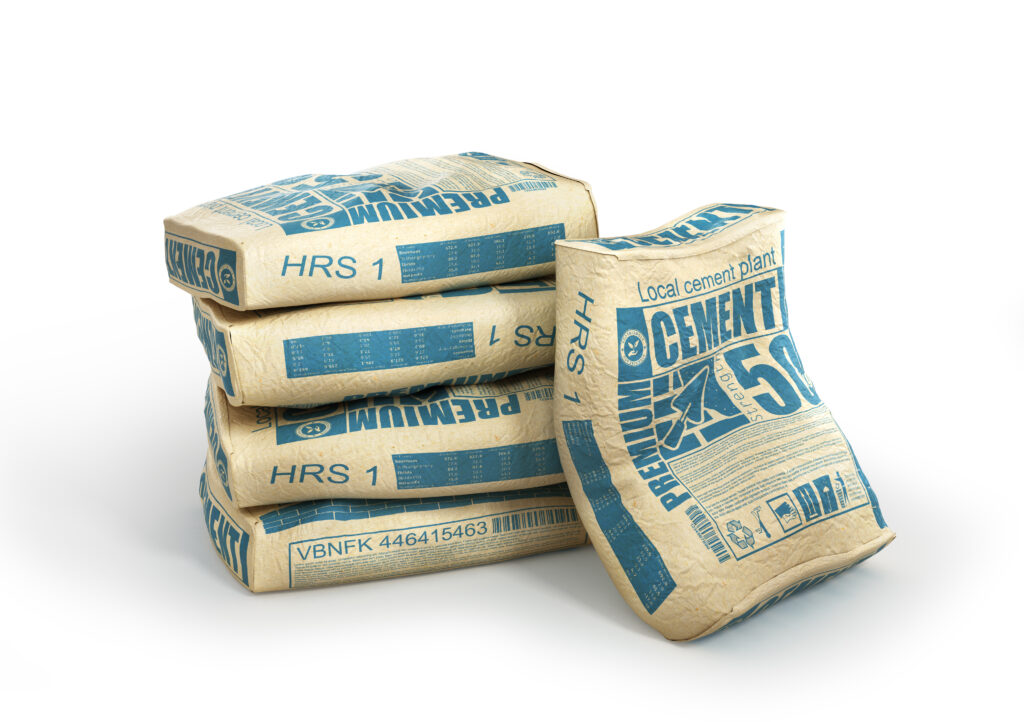When it comes to building a pizza oven, one of the most important decisions you’ll make is choosing the right type of cement. The type of cement you use will determine the strength, durability, and heat resistance of your pizza oven. With so many different types of cement on the market, it can be difficult to know which one is right for your project.
One popular option for pizza oven cement is a combination of Portland cement and perlite aggregate. This mixture produces a lightweight, insulating concrete that can withstand the high temperatures and fluctuations that come with cooking pizza. Another option is to mix hydraulic lime, fire clay, and sand to create a thick, wet consistency that is perfect for building a pizza oven. It’s important to wear protective gloves and a mask when mixing the ingredients to avoid any potential health hazards.
Understanding Cement Types
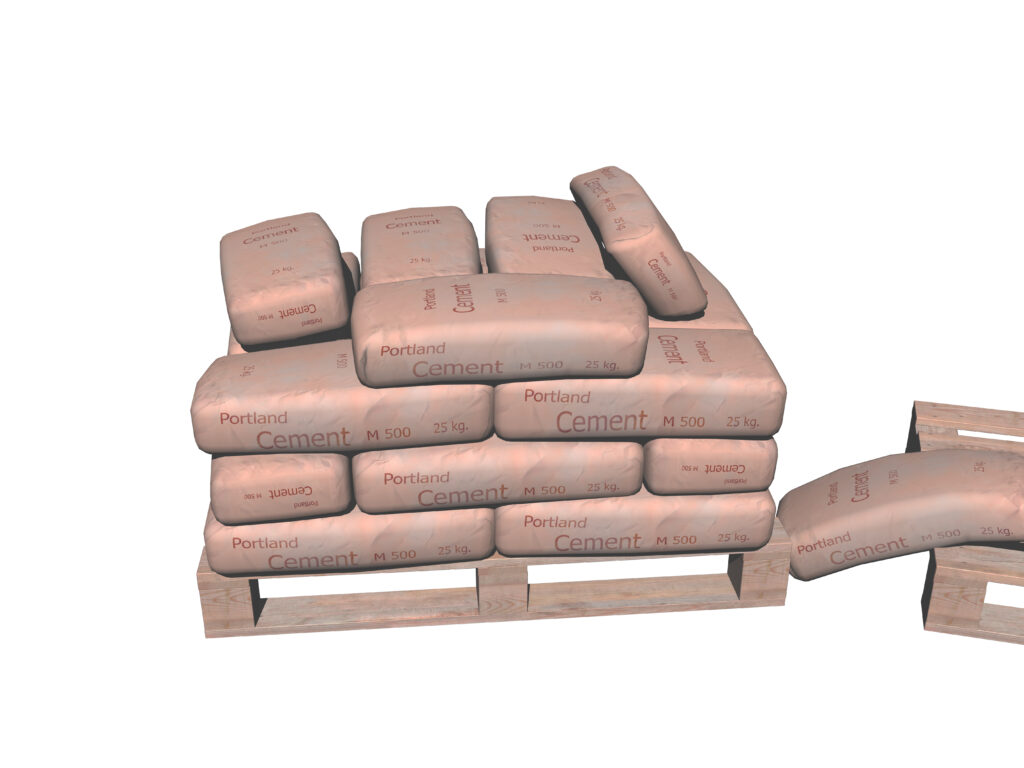
When it comes to building a pizza oven, choosing the right type of cement is crucial. Cement is the binding agent that holds the various components of the oven together. There are several types of cement available, each with its unique properties and advantages.
Here are some of the most common types of cement used for pizza oven construction:
Portland cement
Portland cement is the most widely used cement in construction. It is a hydraulic cement, which means it sets and hardens when mixed with water. Portland cement is made by heating limestone, clay, and other materials in a kiln. The resulting clinker is then ground into a fine powder, which is mixed with gypsum to create the final product.
Refractory cement
Refractory cement is a type of cement that can withstand high temperatures. It is made by mixing alumina, silica, and other materials. Refractory cement is often used in the construction of fireplaces, furnaces, and other high-temperature applications.
Calcium aluminate cement
Calcium aluminate cement is a type of hydraulic cement made from limestone and bauxite. It sets and hardens when mixed with water and is often used in the construction of high-temperature applications such as furnaces, refractory linings, and cement kilns.
White cement
White cement is a type of cement that is used primarily for decorative purposes. It is made from raw materials that are free from iron oxides, chromium, and manganese. White cement is often used in the construction of architectural concrete, precast concrete, and terrazzo.
When choosing the type of cement for your pizza oven, it is essential to consider the specific requirements of your project. Factors such as the temperature range, the size of the oven, and the type of fuel used can all affect the performance of the cement. It is always best to consult with a professional or do thorough research before making your final decision.
Choosing the Right Cement for a Pizza Oven
When it comes to building a pizza oven, choosing the right cement is crucial. There are two main types of cement that are commonly used for pizza ovens: Refractory Cement and Portland Cement.
Refractory Cement
Refractory Cement is a special type of cement that is designed to withstand high temperatures. This type of cement is made from materials that can withstand temperatures up to 3000°F. Refractory cement is ideal for the construction of pizza ovens because it can withstand the high temperatures that are required for cooking pizza.
Portland Cement
Portland Cement is another type of cement that can be used for pizza ovens. This type of cement is made from limestone, clay, and other materials. Portland Cement is not as heat-resistant as Refractory Cement, but it is still a good choice for building a pizza oven.
When choosing the right cement for your pizza oven, it is important to consider the type of oven you want to build, as well as the materials you will be using. Refractory Cement is the best choice if you want to build a high-performance pizza oven that can withstand high temperatures. However, if you are on a budget, Portland Cement is a good alternative.
In addition to choosing the right type of cement, it is also important to use the right mix. The mix should be made up of the right proportions of cement, sand, and aggregate. The right mix will ensure that your pizza oven is strong and durable, and that it will be able to withstand the high temperatures required for cooking pizza.
Overall, choosing the right cement is an important part of building a pizza oven. Whether you choose Refractory Cement or Portland Cement, it is important to use the right mix and to follow the manufacturer’s instructions carefully. With the right materials and a little bit of know-how, you can build a pizza oven that will last for years to come.
Importance of Heat Resistance in Cement
When it comes to building a pizza oven, choosing the right type of cement is crucial. One of the most important factors to consider is heat resistance. Pizza ovens can reach extremely high temperatures, and the cement used must be able to withstand this heat without cracking or breaking down.
Heat-resistant cement, also known as refractory cement, is specially formulated to withstand high temperatures. It is made with materials that have a high melting point, such as alumina, silica, and magnesia. These materials help the cement maintain its strength and integrity even when exposed to extreme heat.
Using a cement that is not heat-resistant can lead to serious problems. If the cement begins to break down or crack, it can compromise the structure of the pizza oven and make it unsafe to use. In addition, the pizza may not cook evenly if the oven is not able to maintain a consistent temperature.
It is important to note that not all heat-resistant cements are created equal. Refractory bricks and refractory concrete are two common types of heat-resistant cement. Refractory bricks are more heat-resistant than refractory concrete and should be used exclusively in areas that come into direct contact with the furnace fire. Refractory concrete, on the other hand, is suitable for areas that do not come into direct contact with the fire.
In summary, choosing the right type of cement for a pizza oven is essential for ensuring its safety and performance. Heat-resistant cement is specially formulated to withstand high temperatures and prevent cracking or breakdown. Refractory bricks and refractory concrete are two common types of heat-resistant cement that can be used in different areas of the pizza oven.
Cement Safety Measures
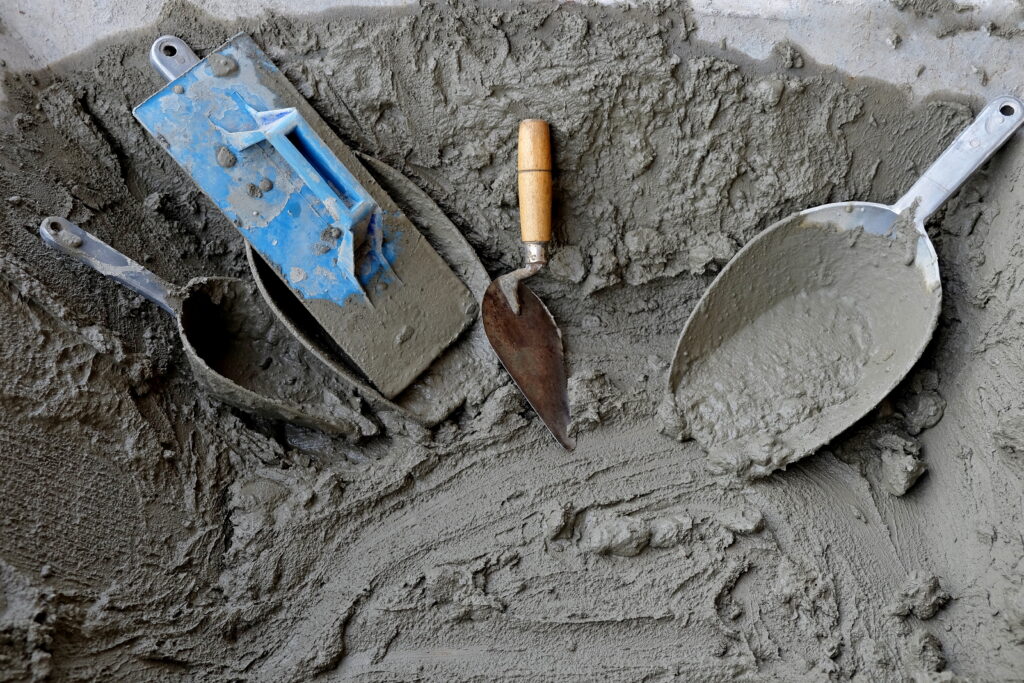
When working with cement, it is important to take certain safety measures to avoid any potential hazards. Here are some tips to keep in mind:
Protective Gear
Wearing protective gear is essential when working with cement. This includes gloves, safety glasses, long-sleeved shirts, and pants. Cement can cause skin irritation, burns, and respiratory problems, so it is important to protect yourself.
Ventilation
Cement can produce dust, which can be harmful to breathe in. Ensure that the area you’re working in is well-ventilated. Consider using a dust mask or respirator to avoid inhaling any dust.
Mixing
When mixing cement, it’s important to follow the manufacturer’s instructions. Wear protective gear and mix the cement in a well-ventilated area. Use a mask to avoid inhaling any dust.
Storage
Store cement in a dry place away from any moisture. Moisture can cause the cement to harden and become unusable.
Clean Up
Clean up any spills immediately. Cement can be difficult to remove once it dries, so it’s important to clean up any spills as soon as possible. Dispose of any cement waste properly.
By following these safety measures, you can avoid any potential hazards when working with cement for your pizza oven.
Preparation and Application of Cement
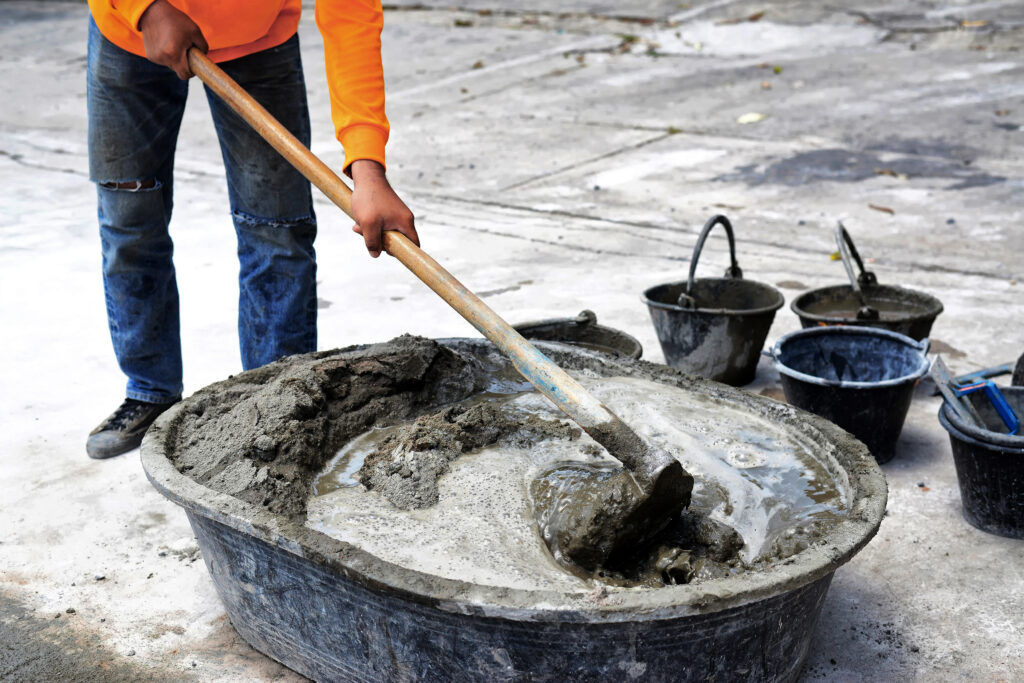
Mixing
When preparing the cement for a pizza oven, it is important to use a refractory cement that can withstand high temperatures. According to Traditional Oven, there are two types of heat-resistant concrete that can be used – high heat refractory concrete and heat-resistant refractory concrete. The high heat refractory concrete is more expensive but stronger and can be used for hot-face applications, while the heat-resistant refractory concrete is cheaper and weaker under heat.
To mix the cement, it is recommended to use a volumetric ratio of 1 bucket of cement to 6 buckets of loose damp sand and enough water to make a plastic mixture, according to Cement & Concrete SA. It is important to not make the mortar too strong as it can cause cracking and damage to the oven.
Application
Once the cement mixture is prepared, it can be applied to the pizza oven. According to Forno Bravo, a good mortar for oven use can be made by mixing 3 parts sand, 1 part cement, 1 part lime, and 1 part powdered clay into a workable mix with water.
It is important to apply the cement mixture in layers, allowing each layer to dry before applying the next one. This will help prevent cracking and ensure a strong and durable pizza oven. It is also recommended to use a trowel or other tools to smooth out the surface of the cement and remove any air pockets.
Overall, the preparation and application of cement for a pizza oven requires careful attention to detail and the use of high-quality refractory cement. By following the recommended mixing and application techniques, you can ensure a strong and durable pizza oven that can withstand high temperatures and provide delicious homemade pizzas for years to come.
Maintenance of Cement in Pizza Oven
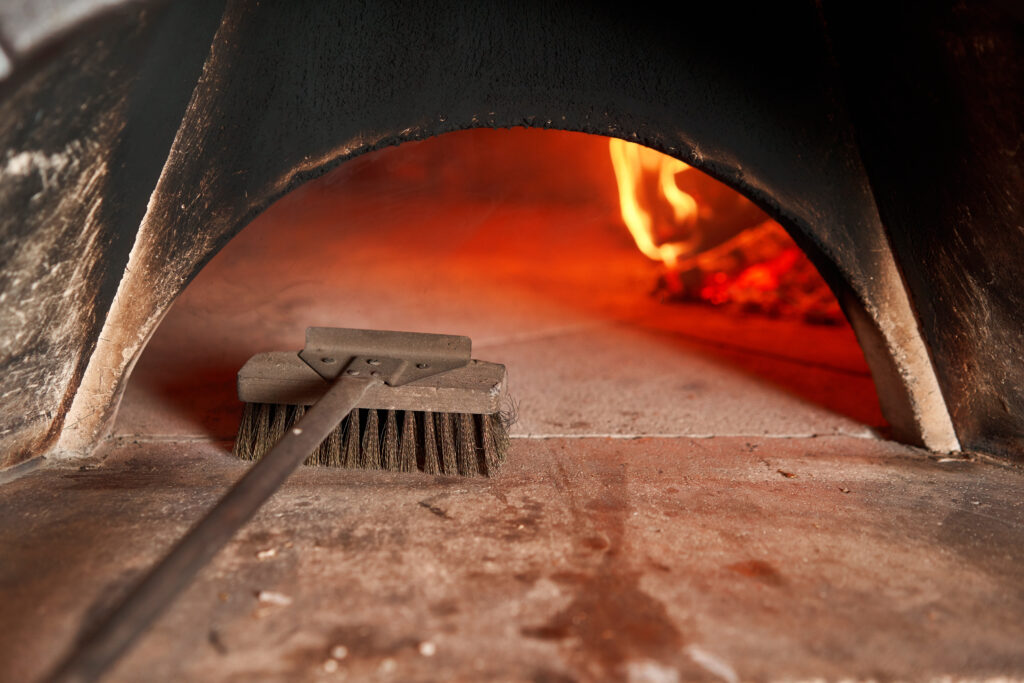
Once you have built your pizza oven using the right type of cement, it is important to maintain it to ensure its longevity and optimal performance. Here are some tips to help you maintain the cement in your pizza oven:
1. Regular Cleaning
It is important to clean your pizza oven regularly to prevent the buildup of ash, soot, and other debris. This will help to prevent damage to the cement and ensure that it continues to function properly. Use a brush or scraper to remove any debris from the oven floor and walls, and then sweep it out with a broom.
2. Reapply Cement as Needed
Over time, the cement in your pizza oven may begin to crack or break down. If you notice any damage, it is important to reapply the cement as needed to prevent further damage. You can use high heat refractory concrete or refractory bricks to repair any damaged areas.
3. Protect from Moisture
Moisture can cause damage to the cement in your pizza oven, so it is important to protect it from moisture as much as possible. Cover the oven with a waterproof cover when it is not in use, and avoid using it in wet or humid conditions.
4. Avoid Abrasive Cleaners
When cleaning your pizza oven, avoid using abrasive cleaners or tools that could damage the cement. Instead, use a soft brush or scraper and mild soap and water to clean the oven.
5. Monitor Temperature
It is important to monitor the temperature of your pizza oven to prevent damage to the cement. Avoid heating the oven too quickly or to temperatures that are too high, as this can cause cracking or other damage to the cement.
By following these tips, you can help to ensure that the cement in your pizza oven remains in good condition and continues to function properly. Regular maintenance will help to extend the life of your pizza oven and ensure that you can continue to enjoy delicious homemade pizza for years to come.
Conclusion
When constructing a pizza oven, it is important to use the right type of cement and ensure that it has been mixed correctly. Refractory cement is a popular choice as it is heat-resistant and can withstand high temperatures. It is specifically designed to withstand the intense heat generated by wood-fired pizza ovens.
Acid-resistant cement is another option that is widely used in pizza oven construction. It is known for its resistance to acid and other chemicals, making it a great choice for outdoor pizza ovens that are exposed to the elements.
When choosing a cement for your pizza oven, it is important to consider the strength and durability of the cement. A common cement with a 32.5 strength class will be adequate for most circumstances. However, if you are looking for a stronger and more durable option, you may want to consider refractory cement.
In addition to the type of cement used, it is important to ensure that the cement is mixed correctly. The ratio of cement to sand should be carefully measured to ensure that the mixture is strong and durable. A ratio of 1:3 (one part cement to three parts sand) is commonly used for pizza oven construction.
Overall, choosing the right cement and mixing it correctly is essential for the successful construction of a pizza oven. By following these guidelines and taking the time to carefully plan and execute your project, you can enjoy delicious, homemade pizza cooked to perfection in your very own outdoor pizza oven.


